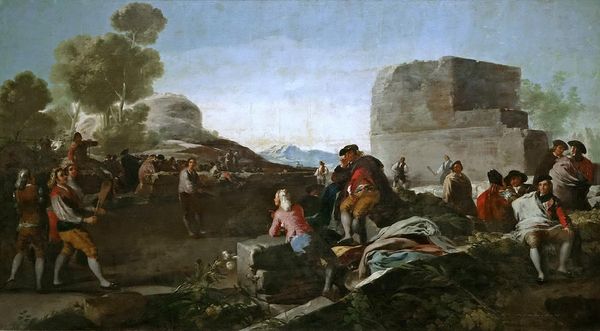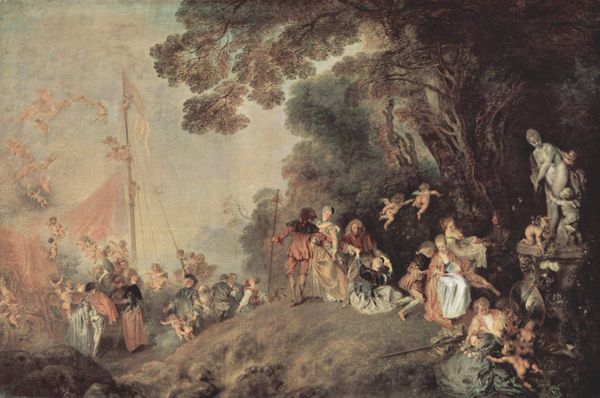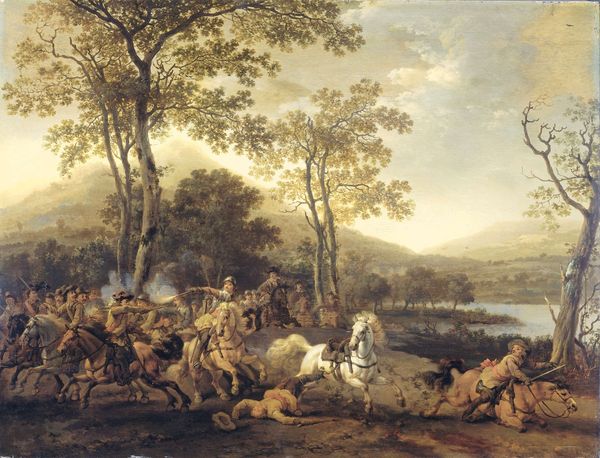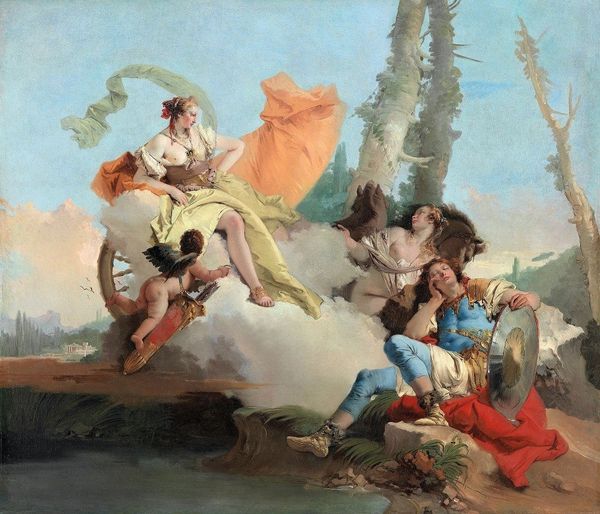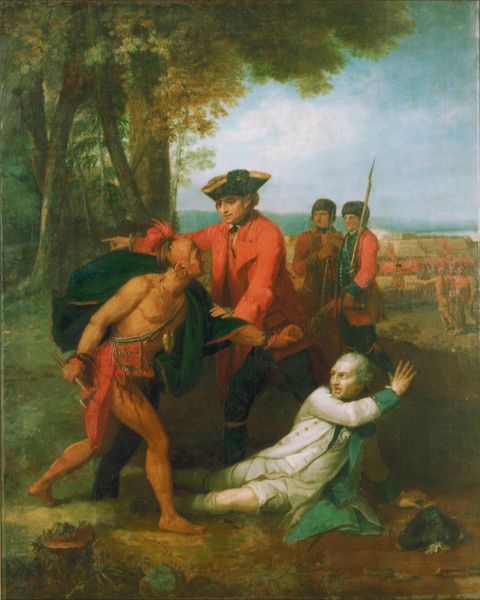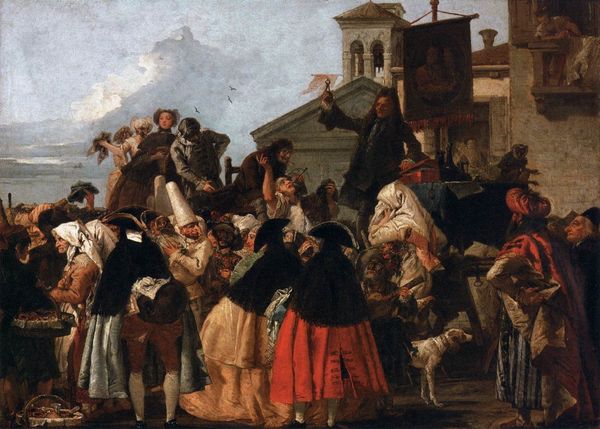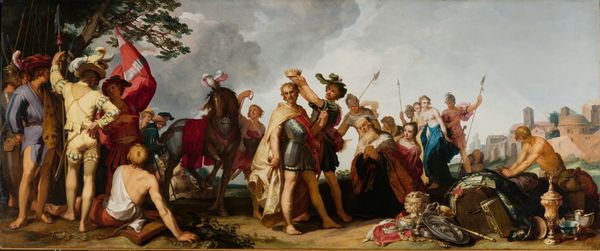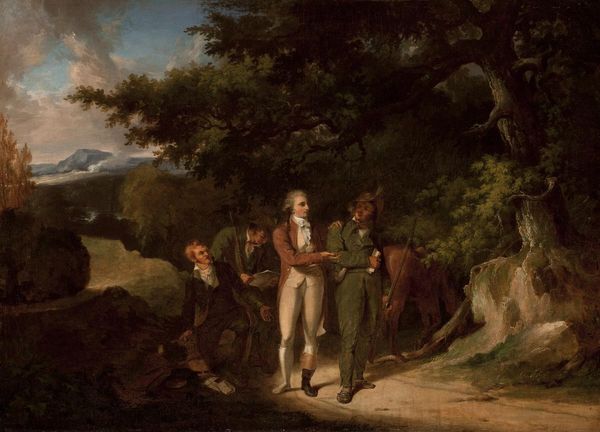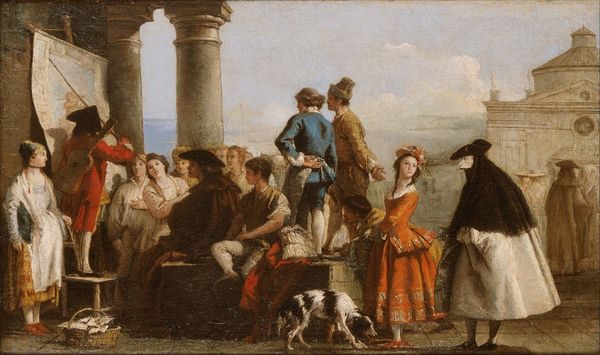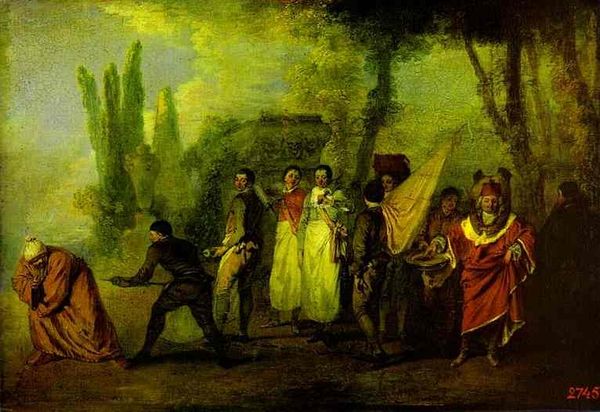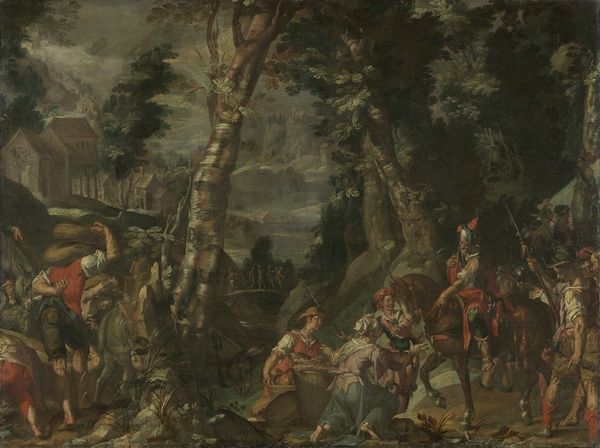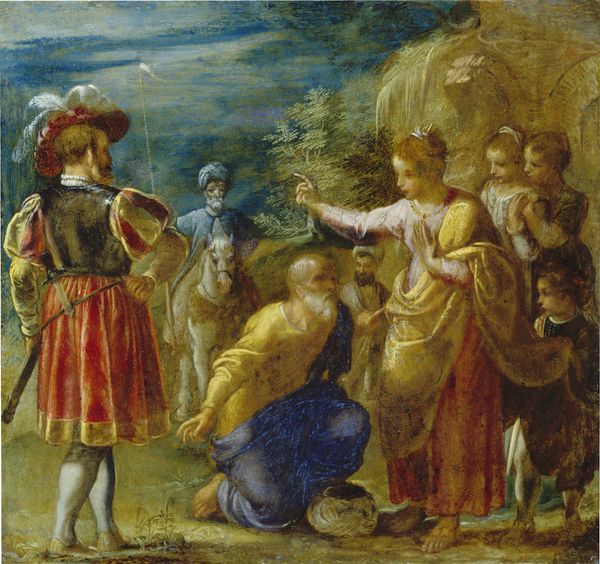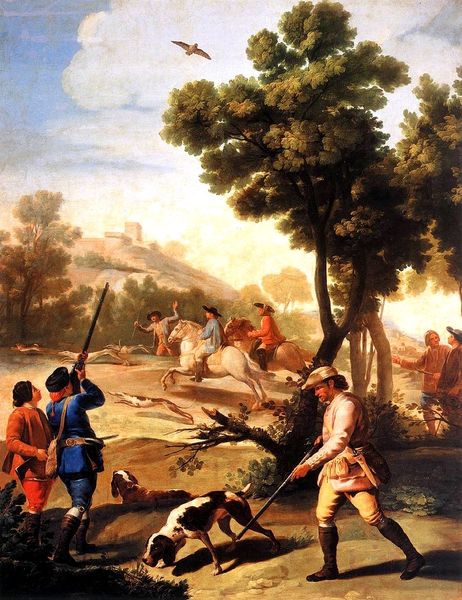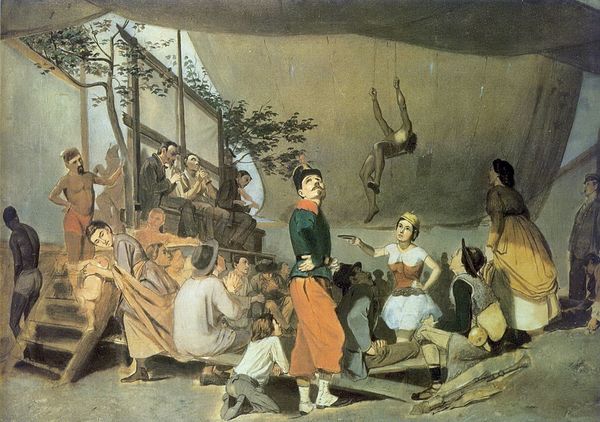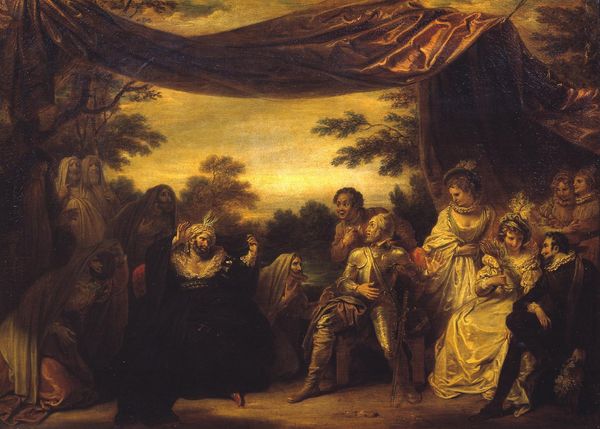
Copyright: Public domain
Editor: This is "The Blind Guitar Player" by Francisco de Goya, painted in 1778, using oil. The scene unfolds with such bustling activity around this central figure. I'm immediately drawn to the contrast between the somber musician and the lively crowd. What initially captures your attention when you look at this piece? Curator: Ah, Goya! Always a little world unto himself. What I see is a tapestry woven with the threads of light and shadow. This work transports me to a sun-drenched day, filtered through the leaves of that exquisite tree, almost baroque in its gnarled exuberance, casting a stage upon which this humble performance unfolds. Note how Goya contrasts the darks and lights, not just to give us depth, but emotion, too. Can you feel it? The earthy tones... almost a yearning there, don't you think? Editor: Yes, there’s definitely a contrast, but it feels almost like he’s poking fun. Like, isn’t this a bit romanticized for poverty? Or am I missing the point? Curator: Missing? Never! Maybe enhancing is a better word. Goya, he wasn't just documenting; he was always making a statement. Yes, it could be read as romantizing a rather grim situation, and yet I feel it serves more as a tribute, a celebration, even, of humanity's persistent song, especially when life gives us a minor chord. A painter after my own heart, finding light in unexpected places. Editor: That's beautifully put. I hadn't thought about it in terms of a celebration. Seeing the artist's emotion in the light really shifts how I understand the piece. Curator: Indeed. Art’s always offering up new perspectives if we are willing to see differently. The light isn't just light; it's a chance. Editor: So true. It is good to look again, and again, at how artists communicate a world that might have been or one that actually was. Thanks for this closer look.
Comments
No comments
Be the first to comment and join the conversation on the ultimate creative platform.
